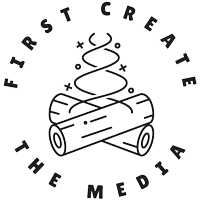Establishing yourself as a thought leader in bioscience can elevate your credibility and position you and your company at the forefront of industry conversations.
But what is it, how do you do it, and why should you invest in it?
What is thought leadership and why does it matter?
Unlike traditional marketing, which focuses on direct promotion of a product or service, thought leadership is about education and inspiration rather than straight advertising.
This doesn’t have to be intimidating. At its core, it’s about two things: “thought” — having original, insightful ideas — and “leadership” — sharing those ideas confidently with others.
Effective thought leadership isn’t just about having opinions — it’s about providing real value for your audience.
We’re talking about original social media posts and articles on your own channels (e.g. LinkedIn, your blog), external outlets, or other assets (e.g. podcasts, white papers, e-books) that explore a particular topic or point of view in a way that is specific to your organisation and mission.
By consistently sharing meaningful high quality thought leadership content, bioscience leaders and organisations can become trusted sources of knowledge and ideas, building their brand and driving traction.
When (and when not) to use thought leadership?
While it may feel tempting to rev up your LinkedIn account or blog and hop right on the thought leadership train, it’s important to take a step back and be sure why you want to do this and how it will help you achieve your business goals.
There are some situations where planning and delivering an organised ongoing program of thought leadership is a good thing to do. For example:
✔️ Building the professional credibility of your team and, by extension, your company
✔️ Raising brand awareness among a wider audience
✔️ Supporting long-term marketing and relationship-building
It is not about:
❌ Immediate lead generation or quick sales
❌ Company updates or product /service descriptions
❌ Generic content that lacks a distinct point of view
Who should do thought leadership?
Thought leadership works best when a real person — a CEO, scientist, or another key opinion leader — puts their name to ideas. This builds authenticity and fosters engagement.
Effective thought leadership means:
- Publishing under personal bylines on LinkedIn, your own website or industry outlets
- Sharing professional experiences and unique perspectives
- Writing in a way that feels human — not overly polished or scripted
Companies can also take a collective thought leadership approach by encouraging multiple voices within their organisation to contribute insights, such as a white paper featuring perspectives from various individuals to highlight specific industry challenges.
Importantly, whether at the individual or company level, successful thought leadership should align with your business strategy, mission and values while staying relevant to your audience.
Need some help figuring out who you’re talking to? Take a look at our blog on defining your target audience for life science organisations.
How to create compelling thought leadership content
1. Find a strong hook
The best thought leadership begins with a compelling idea. Instead of generic insights, focus on big questions or industry challenges. For example, when working with a CEO in the proteomics space, we helped develop this powerful hook:
“You’ve heard of the one dollar genome, but are we ready for the one cent proteome?”
This question tied directly to their company’s expertise while sparking curiosity in the wider scientific community.
2. Make it personal and authentic
Your audience wants to hear from real experts, not a corporate PR machine.
Whether sharing industry trends, a research breakthrough, or lessons from experience, write as you would speak. Make it clear, confident, and engaging, and don’t be afraid to add colour in the form of metaphors, memes or even jokes if it fits with your brand tone of voice.
3. Consistency is key
One article won’t make you a thought leader overnight. To build credibility, you need to show up regularly. Do this by committing to a cadence — whether it’s weekly, biweekly, or monthly — to maintain momentum.
If bandwidth is an issue, working with an expert science-led content agency is a great way to ensure you’re consistently generating ideas and producing high quality, original content. A good agency will also work with your leadership, wider team and key opinion leaders to turn their insights into compelling content and help you identify what to cover next.
4. Repurpose and amplify your content
Great thought leadership isn’t a one-and-done effort. You can maximise your content’s impact by repurposing it across multiple platforms. For example:
- Turn a blog post into a LinkedIn carousel
- Use expert interviews for audio or video content, such as podcasts, videograms or audiograms
- Turn a blog series into an e-book or white paper
- Adapt a webinar into a blog post and accompanying video clip
- Use thought leadership articles as the basis for a regular email newsletter or marketing sequence
How to measure the success of thought leadership
Like any form of brand awareness activity, it can be difficult to pin an exact ROI on thought leadership. This kind of high value content supports top-of-funnel marketing, so it can take time to manifest business development opportunities or customer leads.
Measuring the success of thought leadership isn’t straightforward, but there are a few things you can focus on. For example, you can look at quantitative metrics like social media engagement rate, website traffic, read times and reach. You can also look at more qualitative measures such as social media comments, personal feedback, and whether your articles help to support business development conversations.
While thought leadership takes time, the payoff — stronger industry credibility, better networking opportunities, and an easier path to new business — makes it a valuable investment.
Ready to elevate your thought leadership?
Whether you’re just starting out or looking to refine your thought leadership strategy in the life sciences, First Create The Media can help. Get in touch to explore how we can position you and your company as a credible leader in the biosciences to drive traction and help you achieve your goals.
For more expert insights, sign up to our newsletter or listen to our Chief Creative Officer, Kat Arney, discuss her blueprint for generating attention-grabbing thought leadership on the Science Marketer podcast.
Find out how we established ERS Genomics as a biotech thought leader and saved them £55k+ in the process.

